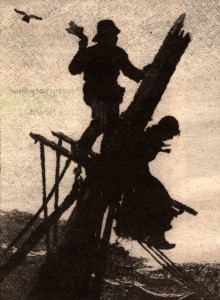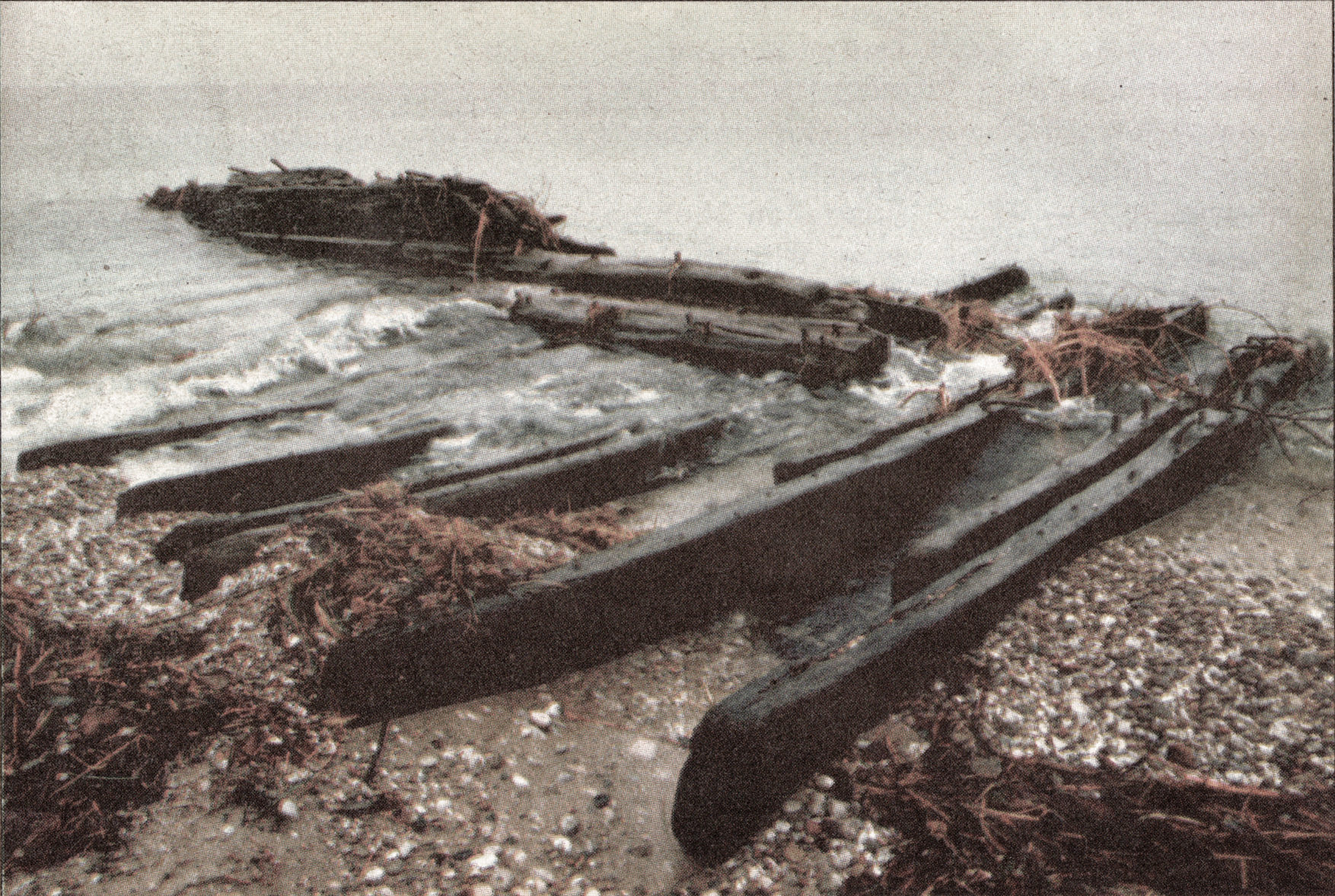Mystery of woman’s death still haunts maritime history
This year marks the 125th anniversary of a dramatic event in the history of Betsie Bay and one that resonates today. On October 16, 1880, a fierce and sudden storm struck the Great Lakes, sinking 90 vessels and claiming 118 lives. With great risk and sacrifice, residents labored to save the crew of one of these shipwrecked vessels. To the astonishment of many, the only woman on board, a cook named Lydia Dale, was never rescued. The controversy surrounding the abandonment of the woman lashed to the mast of the sinking ship surfaces and then fades into the sands of time, much like the remains of the shipwreck itself.

The crew of seven men and one woman were forced to climb up into the masts to escape the frigid water. The woman cook was ill, and was assisted by her shipmates to gain the relative safety of
the foremast.
At daybreak, a young boy living near Elberta, witnessed the awful plight of the Hartzell and quickly passed the word into town. A gallant man named John Woodward rode fleetly on horseback to sound the alarm at the Point Betsie Life Saving Station. Against the obstacles of rugged terrain, wind and snow, a half ton cart loaded with lifesaving apparatus was hauled to the wreck site.
Meanwhile, townspeople began to gather on the beach near the wreck. Using pieces of driftwood laid upon the sandy bluff, they spelled out a message in huge letters “Lifeboat coming” and built a roaring signal fire. This provided some comfort to the stranded sailors who were covered in ice and numb from exposure. Near noon the lifesaving crew arrived, owing to the aid of many townsfolk who cleared away brush and hauled the heavy cart by hand up and down the wooded hills and sandy bluffs. The Lyle gun, a cannon built to save lives by shooting a projectile with a line attached was fired and the line connected to the wreck.
With this line, the breeches buoy and life car were rigged to haul the imperiled crew ashore.
The first person rescued was the first mate, followed by two sailors in the life car. When interrogated as to why the woman was not the. first ashore, the rescuers were told, “She would be on the next trip.’ With great exertion, the life car was hauled out to the wreck again. Through the wind-whipped snow and spray, shadowy figures could be seen lowering themselves in the life car.
At last it was brought ashore through the raging surf and opened, two sailors were helped out, but no woman. The crowd became angry, fearing the crew might abandon a helpless woman. The life car was quickly sent out again as night was fast approaching. On this trip, the Hartzell‘s captain and second mate appeared. Stunned, the rescuers rushed the car back to the wreck, knowing that the swaying mast could topple at any minute, drowning the woman and two remaining sailors.
In the stormy darkness, it became impossible to see if anyone was descending into the swaying life car. It was kept out a long lime to give the sailors every opportunity to save the woman.
Finally, the word was given to haul on the line and the life car emerged from the blackened surf. The crowd rushed into the water and hauled out the damaged and capsized life car.
The two remaining men were found inside, but no woman. The crowd threatened to become an angry mob and the Life Saving captain quickly intervened. Turning towards the two sailors, he demanded, “Why wasn’t that woman brought ashore?” Both sailors replied, “The woman is dead and has been for some time.”
There was nothing to be done to recover the woman’s body in the blackness without extraordinary risk to the rescuers, so the frozen and exhausted band of townspeople and lifesavers scattered into town. At daybreak, the lifesavers reassembled at the scene, but found the wreck had vanished.
Seventeen days later, Lydia Dale’s body washed ashore at Frankfort. The county coroner ruled she had come to death by drowning, implying she was alive when abandoned and perished when the mast
toppled into the storm tossed lake.
What really happened on the mast of the Hartzell may never be known. The U.S. Lifesaving Services annual report (in period Victorian style) summarized, “Although this occurrence was singularly ghastly and mournful, it is necessarily reduced to a secondary place in the recital by the noble character of the exploit of rescue which accompanied it. It will at once be remarked that this rescue was largely accomplished by the aid of the people from town, for never was public recognition due to service in a human cause more justly deserved than in this instance.”
Note: This story originally published in 2005.




